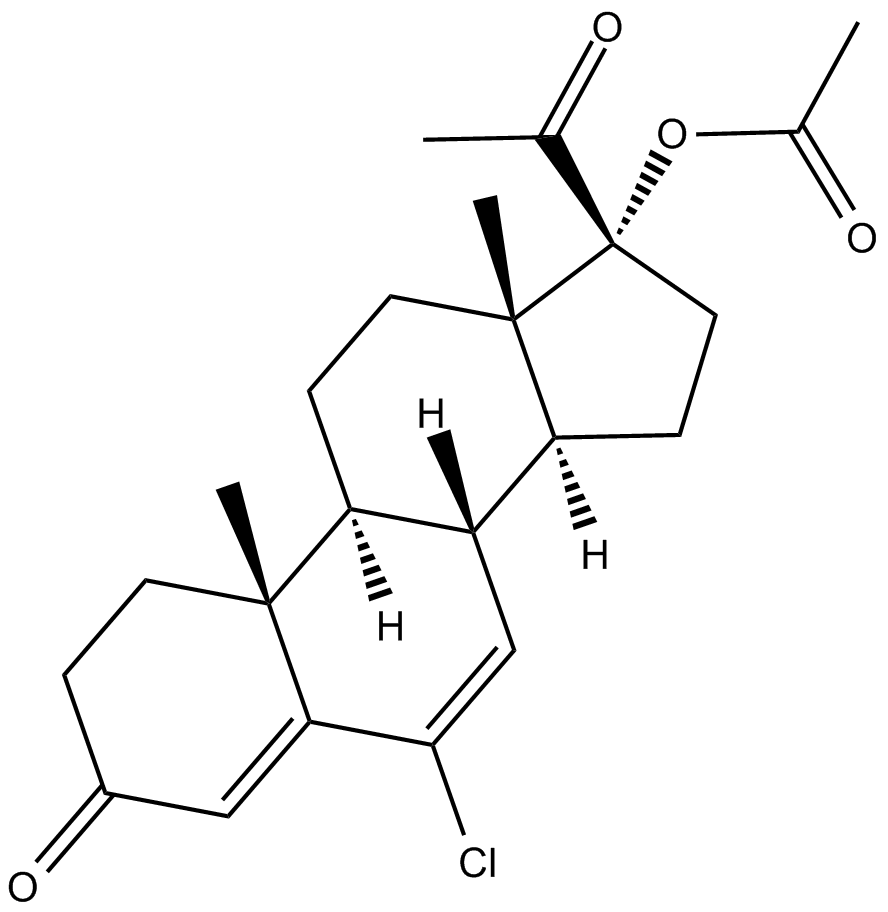Chlormadinone acetate (Synonyms: NSC 92338) |
| Catalog No.GC11144 |
steroidal progestin with additional antiandrogen and antigonadotropic effects
Products are for research use only. Not for human use. We do not sell to patients.

Cas No.: 302-22-7
Sample solution is provided at 25 µL, 10mM.
Chlormadinone is a derivative of progesterone with antiandrogen and antigonadotropic effects.
Progestogens can bind to nuclear receptor and then bind with DNA to form Progestogen Response Element, which will then activate the processes of transcription.
In vitro: When compared with other progesterone derivatives, chlormadinone showed a relatively strong positional effect. Chlormadinone was found to have high binding affinity to the progesterone receptor, resulting in strong progestogenic activity at the endometrium level. Chlormadinone could also prevent the LH surge in the same way as progesterone. In addition, chlormadinone could weakly bind to the glucocorticoid receptor, but not to either mineralocorticoid nor estrogen receptors. Chlormadinone at high doses competed effectively with androgens to block their effects and also downregulated the number of androgen receptors [1].
In vivo: Results from previous rat study showed that chlormadinone at low doses, similar to cyproterone acetate, was able to selectively impaire the epididymal function and maturation of spermatozoa without appreciably changing either testicular function or pituitary gonadotrophin secretion [2].
Clinical trial: In a previous open study of six healthy women with regular menstrual cycles, 5 mg chlormadinone was given twice a day. Results showed that the daily dose of 10 mg used alone could induce suppression of the LH surge and could provid an excellent method of contraception with both LH surge and endometrial atrophy. However, long-term studies were lacking to indicate that the use of the chlormadinone alone was not associated with a long-term decrease in estradiol secretion [1].
References:
[1] Bouchard P. Chlormadinone acetate (CMA) in oral contraception--a new opportunity. Eur J Contracept Reprod Health Care. 2005;10 Suppl 1:7-11.
[2] Sharma MM,Lal G,Jacob D. Effects of low doses of chlormadinone acetate in the rat. J Reprod Fertil.1976 Sep;48(1):177-9.
Average Rating: 5 (Based on Reviews and 28 reference(s) in Google Scholar.)
GLPBIO products are for RESEARCH USE ONLY. Please make sure your review or question is research based.
Required fields are marked with *




















